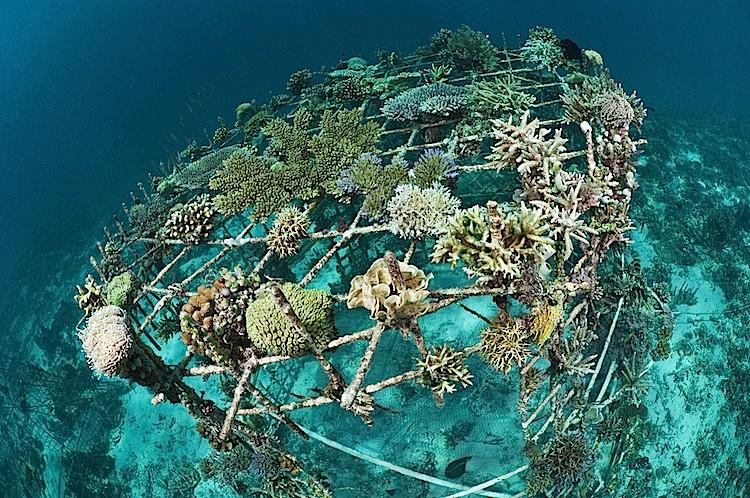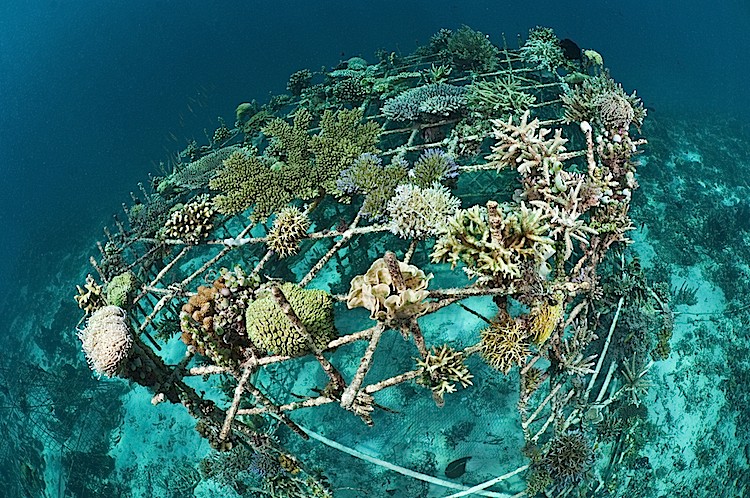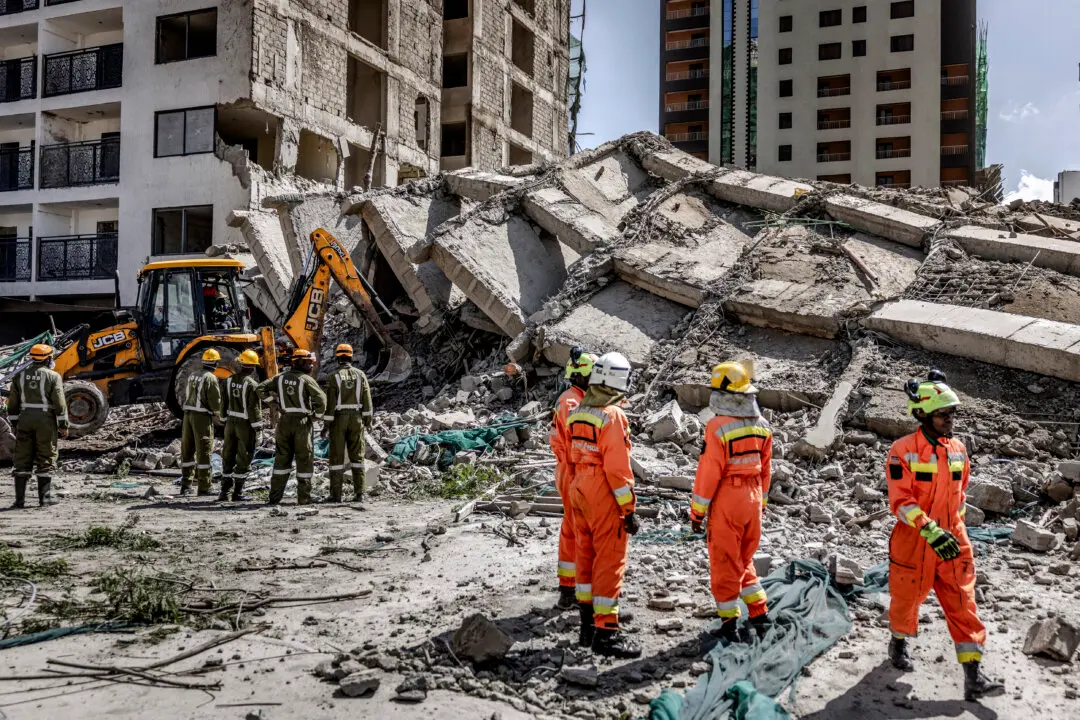The Biorock process was developed by Thomas Goreau and Wolf Hilbertz in the 1970’s. Electricity is used to promote the deposition of calcium carbonate, and to a lesser extent magnesium hydroxide, which build up on the surface of the cathode.
Hard corals quickly bond to this material and the process is thought to accelerate coral growth by up to four times. The resulting “reef” of hard coral soon attracts other inhabitants.
Biorock structures—metal frames connected to an electrical supply on the surface—have been used in the Maldives, Bali, Papua New Guinea, the Seychelles, Japan, and the Caribbean. The process has been touted as a way to rehabilitate damaged reefs in all tropical areas.






